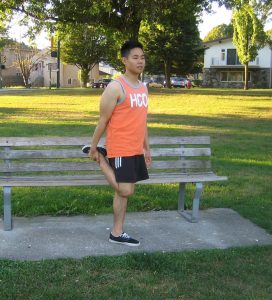Abrupt pain that develops in the calf muscle during activity can be due to a torn or pulled calf muscle. This injury is called as a calf strain or pull and occurs when a region of the muscles of the lower leg are overly stretched beyond their limits to endure tension. Take note that this stretching can cause small micro tears to the muscle fibers or full rupture in severe injuries.
https://www.youtube.com/watch?v=krkCzNwI1fU
Calf muscle cramps
In less severe cases but often sore, the cause of calf pain is a calf muscle cramp. Take note that this involuntary contraction of a muscle is often short-lived but can be strong in some circumstances that results to the formation of a bruise.
Achilles tendon tear
Remember that a calf strain is quite similar to an Achilles tendon rupture or tear but the difference is that it occurs higher in the back part of the leg. The indications of a calf strain are similar to an Achilles tendon rupture. There is abrupt, piercing pain in the rear part of the lower leg or swelling, pain and even bruising over the calf muscle. Most cases of calf injuries will make it hard for the individual to tolerate weight on the affected side as well as hard to stand on the toes.
Causes and severity of strains

A calf pull or strain often occurs during acceleration or an abrupt change in direction while running. A damaged calf muscle can spasm and even contract in a forceful manner where the toes will point downward automatically. Bruises can also manifest over the damaged area as well as the foot and ankle due to the accumulation of blood from internal bleeding.
Calf strains can be minor or severe and usually graded as follows:
Grade 1 – The muscle is stretched which results to small micro tears in the muscle fibers. It usually takes 2 weeks for full recovery.
Grade 2 – There is partial tearing of the muscle fibers. It usually takes 5-8 weeks for full recovery.
Grade 3 – This is considered as the most severe calf strain along with full tearing or rupture of the muscle fibers in the lower leg. It typically takes 3-4 months for full recovery and in some cases, surgery is required.
Treatment for calf strains
The initial treatment for calf strain is the RICE method (rest, ice, compression and elevation). Make sure that you will wrap the calf to prevent blood from accumulating in the foot and keep it elevated during the first 24 hours to minimize swelling.
Anti-inflammatory medications can help minimize pain. After some time, the muscle reattaches to the tendon. However, the calf is often shorter than before the injury and susceptible to repeat injury in the future.
It is recommended to schedule an appointment with a doctor to ensure fast rehabilitation. The rehabilitation program for a calf strain depends on the severity of the injury and usually includes the following:
- Adequate rest for the muscle – the individual should avoid activities that trigger pain. Avoid any impact activity or those that involve excessive stretching.
- Taping the calf – this can help minimize the pain and provide protection from further injury.
- Using a foam roller – mild self-massage using a foam roller can be performed as the calf injury heals. This helps minimize formation of scar tissue as well as improve the flow of blood to the affected region.
- Range of motion stretching exercises – once acute pain is gone; the individual should start stretching the muscle in a moderate manner using passive range of motion stretching.

